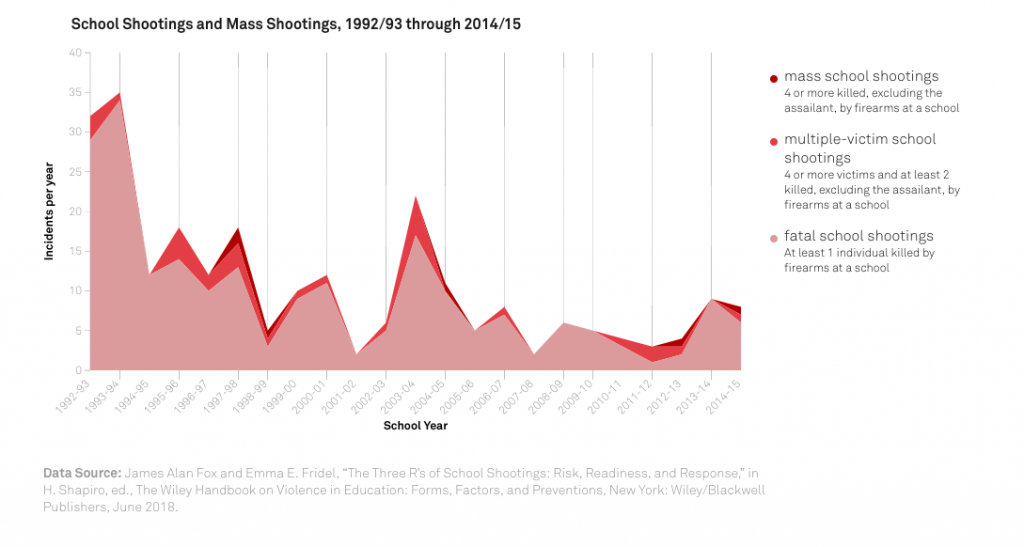Emotions don’t make good public policy. Facts do. And a new study from researchers at Northeastern University has found that school shootings are not more common than they used to be, and that schools are actually safer than they were in the 1990s.
According to James Alan Fox, the Lipman Family Professor of Criminology, Law, and Public Policy at Northeastern, four times the number of children were killed in schools in the early 1990s than in the past few years.
“There is not an epidemic of school shootings,” he said, adding that more kids are killed each year from pool drownings or bicycle accidents.
Looking at just the past decade, the rate of school shootings has remained more or less constant, contrary to the narrative peddled by the mainstream media.
In case one accuse Fox of pro-gun bias, his data was collected from governmental organizations and a laundry list of anti-gun organizations. He and doctoral student Emma Fridel used stats from USA Today, the FBI’s Supplementary Homicide Report, Congressional Research Service, Gun Violence Archive, Stanford Geospatial Center and Stanford Libraries, Mother Jones, Everytown for Gun Safety, and an NYPD report on active shooters.
Despite the downward trend they identify, Fox and Fridel believe policymakers can still work to reduce the number of students killed each year. They cite the huge ratio of guidance counselors to high school students in many schools and note that increasing the number of counselors could help identify troubling behavior.
“You might have students in a very large school who are troubled but who are basically flying under the radar, because you have one guidance counselor for 400 students,” Fridel said.
SEE ALSO: Comedian Bashes Active Shooter Defense Drills in Schools
Most policy proposals currently being discussed, however, will have little effect, according to the researchers.
“The thing to remember is that these are extremely rare events, and no matter what you can come up with to prevent it, the shooter will have a workaround,” Fox said, adding that over the past 35 years, there have been only five cases in which someone ages 18 to 20 used an assault rifle in a mass shooting.
Other safety precautions, such as installing metal detectors and requiring ID cards for entry, have also proven ineffective in past school shootings. The study notes several examples of a murderer either avoiding or shooting through such security measures. In one 1989 incident, a man killed 5 elementary school children by targeting them on a playground.
“I’m not a big fan of making schools look like fortresses, because they send a message to kids that the bad guy is coming for you—if we’re surrounding you with security, you must have a bull’s-eye on your back,” Fox said. “That can actually instill fear, not relieve it.”

